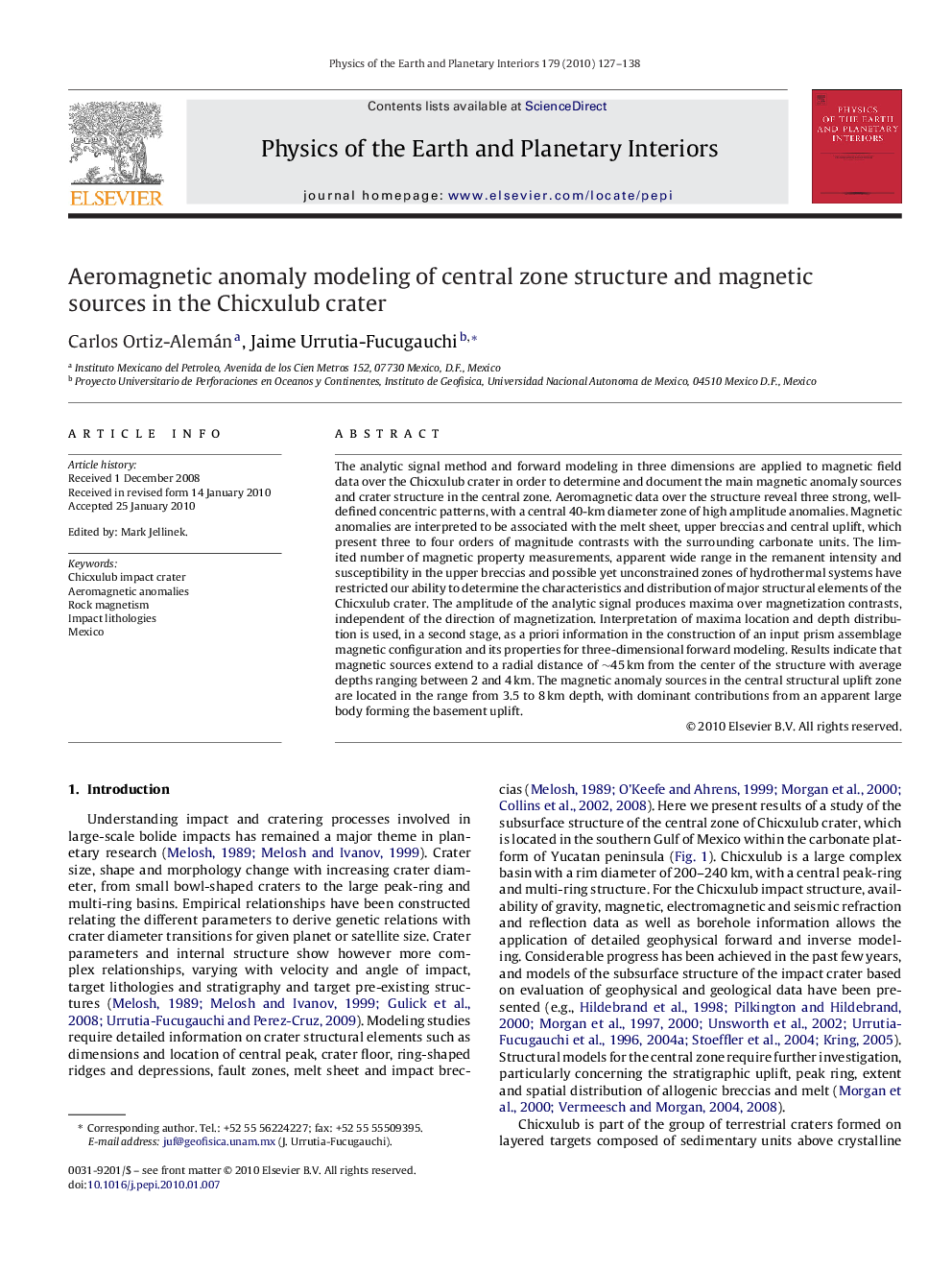| Article ID | Journal | Published Year | Pages | File Type |
|---|---|---|---|---|
| 4742139 | Physics of the Earth and Planetary Interiors | 2010 | 12 Pages |
The analytic signal method and forward modeling in three dimensions are applied to magnetic field data over the Chicxulub crater in order to determine and document the main magnetic anomaly sources and crater structure in the central zone. Aeromagnetic data over the structure reveal three strong, well-defined concentric patterns, with a central 40-km diameter zone of high amplitude anomalies. Magnetic anomalies are interpreted to be associated with the melt sheet, upper breccias and central uplift, which present three to four orders of magnitude contrasts with the surrounding carbonate units. The limited number of magnetic property measurements, apparent wide range in the remanent intensity and susceptibility in the upper breccias and possible yet unconstrained zones of hydrothermal systems have restricted our ability to determine the characteristics and distribution of major structural elements of the Chicxulub crater. The amplitude of the analytic signal produces maxima over magnetization contrasts, independent of the direction of magnetization. Interpretation of maxima location and depth distribution is used, in a second stage, as a priori information in the construction of an input prism assemblage magnetic configuration and its properties for three-dimensional forward modeling. Results indicate that magnetic sources extend to a radial distance of ∼45 km from the center of the structure with average depths ranging between 2 and 4 km. The magnetic anomaly sources in the central structural uplift zone are located in the range from 3.5 to 8 km depth, with dominant contributions from an apparent large body forming the basement uplift.
